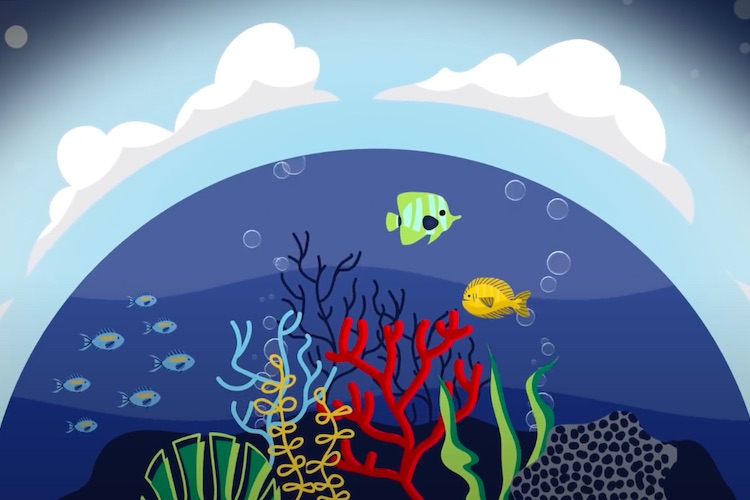Carbon Cycle
Geographer Mathias Disney on carbonate deposits in the ocean, how wildfires release the carbon in the atmosphe...

On December 2014 Geophysical Research Letters published a paper “Developing water change spectra and distinguishing change drivers worldwide” studying the influence of land and water use on the global water cycle. We have asked the corresponding author of this research, Dr. Fernando Jaramillo from Stockholm University, to comment on this work.
The aim of this research was to identify and separate the effects of atmospheric climate change and other landscape drivers on the changes of the terrestrial water cycle during the last century. Understanding and quantifying changes subdividing precipitation into evapotranspiration, runoff and water storage change in the landscape is required for assessing changes to freshwater availability and the water cycle; evapotranspiration includes evaporation from surface and soil water and transpiration by plants, and runoff refers to water flowing on the landscape. However, atmospheric climate change is not the only driver of changes to the freshwater system, land use and water use from human activities as well as other changes to water phase and storage are landscape drivers and also affect water availability.

In this study we analysed hydroclimatic, land-use and water-use data from the beginning of the twentieth century up to present times in 736 basins distributed along all continents to determine the effect of these landscape drivers on the historical changes to the water cycle. We used a separation approach based on the hydroclimatic framework of the Russian climatologist Mikhail Budyko – framework linking the main physical principles of water and energy supply and demand that govern water balance. This was achieved by, first, calculating the temporal change in evapotranspiration based on catchment-scale water balance from observed precipitation and runoff data series, and subtracting from this total change a theoretical estimate of its climate-driven component of change (based on empirical relations). The remaining evapotranspiration component after this subtraction provides then an estimate of the landscape-driven component of change in evapotranspiration.
We found that the effects from landscape drivers on the water cycle, which mostly include human activities, are in general opposite to those of atmospheric climate change in most continents at the and at the global scale. We also found that climate change alone could not explain historical changes to the water cycle in almost 75% of the basins studied worldwide, highlighting the impact of human activities on the terrestrial water cycle. These results show that landscape drivers, and not least the direct human drivers, and their water effects need to be included and accounted for also in projections of future water availability.
In general, projections of forthcoming changes to the terrestrial water cycle at global scales have until the last decade (to best knowledge) considered mostly atmospheric climate change, with these changes then being the main driver of model-projected large-scale water availability. Some more recent regional studies have showed that also changes occurring in the landscape itself may be dominant drivers of future changes to water availability. As expected, this has resulted in several global studies attempting to study the implications of landscape drivers on the water cycle by means of complex land surface, dynamic vegetation and water use modelling.
However, we noticed while working on my doctoral studies in Physical Geography at Stockholm University that the available hydroclimatic information available (on runoff, precipitation and temperature) collected in many basins around the world over the last century had not yet been used as primary source for such global assessments. This information was just waiting there to be collected to prove the real influence of landscape drivers on the water cycle, when compared to that of climate. Such analysis could be then used to validate the mentioned global modelling attempts.
Our results show that landscape-driven water changes often overshadowed direct climate-driven water changes during the twentieth century. Global changes to water on land can therefore not be explained or projected based solely on information about the direct water effects of atmospheric climate change, without the relevant account and resolution landscape drivers. Earth system modelling must be further developed to sufficiently represent these multiple, heterogeneous landscape drivers, which we here found to mostly counteract the direct climate-driven water change. This study should also grow awareness on the fact that hydroclimatic station networks around the world are diminishing due to a general lack of interest in data collection, and how historical hydroclimatic information is necessary to perform studies such as the one of this research, in order to understand the future implications of human activities on the water cycle.

Geographer Mathias Disney on carbonate deposits in the ocean, how wildfires release the carbon in the atmosphe...

Scientists have assessed the contribution of humans as a species to the history of life on Earth

Geographer Anson Mackay on the ecosystem services, the demands on freshwater around the Earth and the decline ...